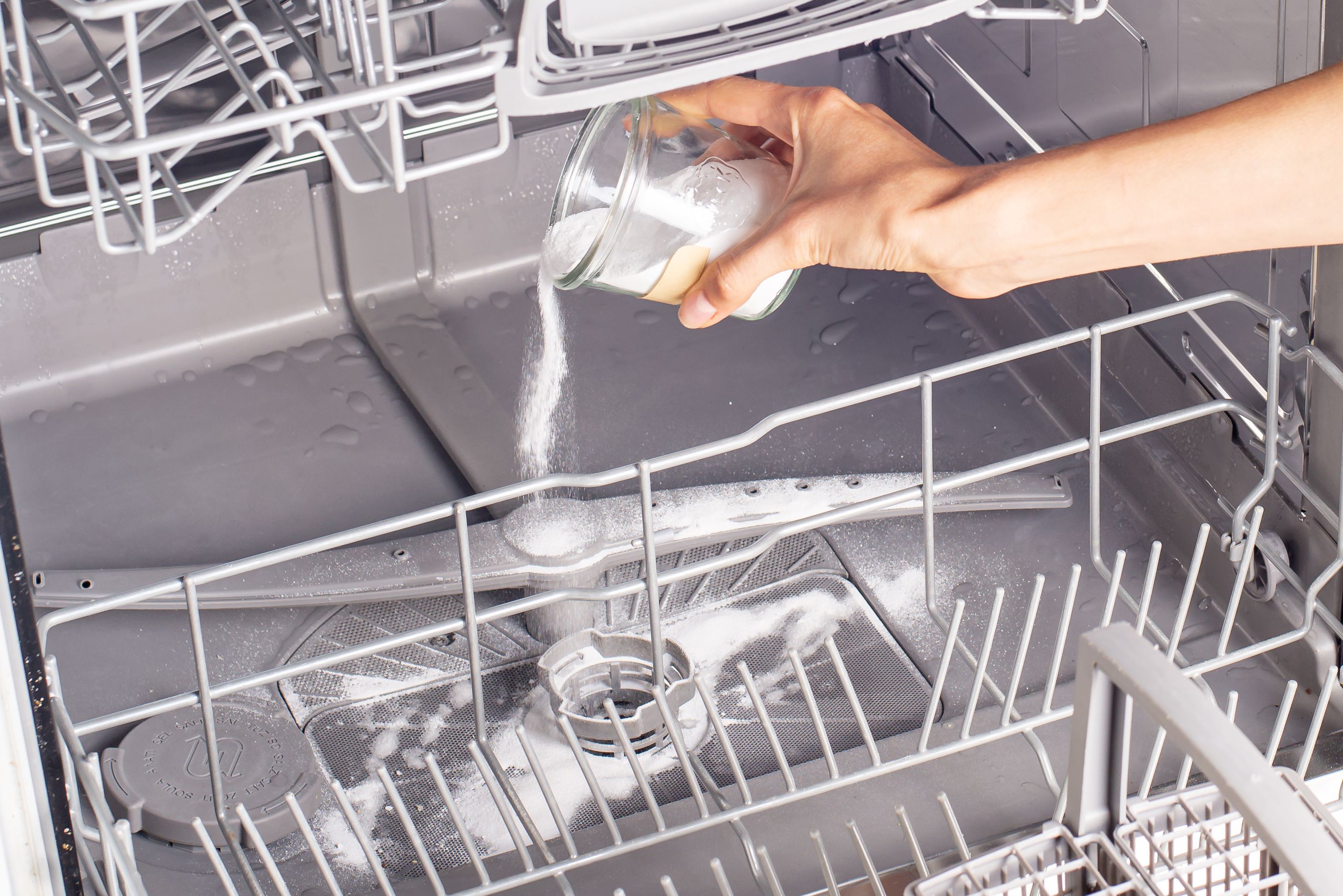
Dishwashers are a massive timesaver in the kitchen. Instead of you spending your time scrubbing away at food stains, dishwashers do the heavy lifting to keep your plates, glasses and utensils sparkling clean. But while you probably clean your dishes on a daily basis, how often do you clean your dishwasher? Yes, that's right, the appliance that cleans your dishes needs cleaning too from time to time.
After numerous cycles, grease, soap scum and food debris will slowly start to build up, clogging your dishwasher and preventing it from running properly. Additionally, if you live in an area with hard water, it can cause stains inside your dishwasher. That's why it's important to clean your appliance on a monthly basis (or more often, if you use it frequently), and that's where vinegar comes in.
How to Clean a Dishwasher with Vinegar
Clean the dishwasher drain to remove any bits of food.
Place 1 cup of white vinegar in a bowl or dishwasher-safe container on the top rack of an empty dishwasher.
Run a hot-water cycle and let the dishwasher air-dry.
While you can use nearly any kind of vinegar with 5% acidity for cleaning your dishwasher, it's distilled white vinegar that you get at the grocery store that's the safest, not as smelly as, say, cider vinegar, and it's economical.
Distilled white vinegar, made up of 95% water and 5% acetic acid (that smelly, sour-tasting component) that's great in salad dressings, will help cut through any debris buildup, including food-related oil and grease, mineral deposits and stains, leaving your dishwasher sparkling. It eliminates any musty odors while also removing any mold or mildew. It's important to note that the bowl of vinegar you're putting in the dishwasher needs to be on the top rack and not poured in the area where detergent typically goes. Vinegar's acidity (no matter what percentage) will slowly erode parts of the dishwasher, like the gaskets or lining, if it's run through the same area as the detergent. Also, be sure not to let the vinegar get near any natural stone surfaces in your kitchen while working with it—granite or marble countertops, for instance.
If, after you've run the vinegar cycle, your dishwasher still isn't as clean as you want it, you can take it a step further with baking soda.
How to Clean a Dishwasher with Baking Soda
Sprinkle 1 cup of baking soda across the bottom of an empty dishwasher.
Run a hot-water cycle and let the dishwasher air-dry.
Baking soda cleans the interior of the machine and removes any stains. Do not use vinegar and baking soda in the same cycle. The two substances will begin to foam and leave you with a big mess. Instead, a vinegar cycle should run first, followed by a baking soda cycle.
Baking soda, also known as sodium bicarbonate, is a mild alkali with a very slight grit—you can feel it just touching it. It's also water-soluble, so it dissolves quickly in a dishwasher cycle without leaving any lingering grit. When baking soda comes up against grease, a natural reaction occurs called saponification, which helps dissolve the grease and lift stains, and this will help eliminate odors as well. When working with baking soda, be sure the powder doesn't get near anything that scratches easily, such as natural stone, glass or mirrors, hardwood, ceramic stovetops/ovens and aluminum.

 Admin
Admin
Leave A Reply
Your email address will not be published. Required fields are marked *